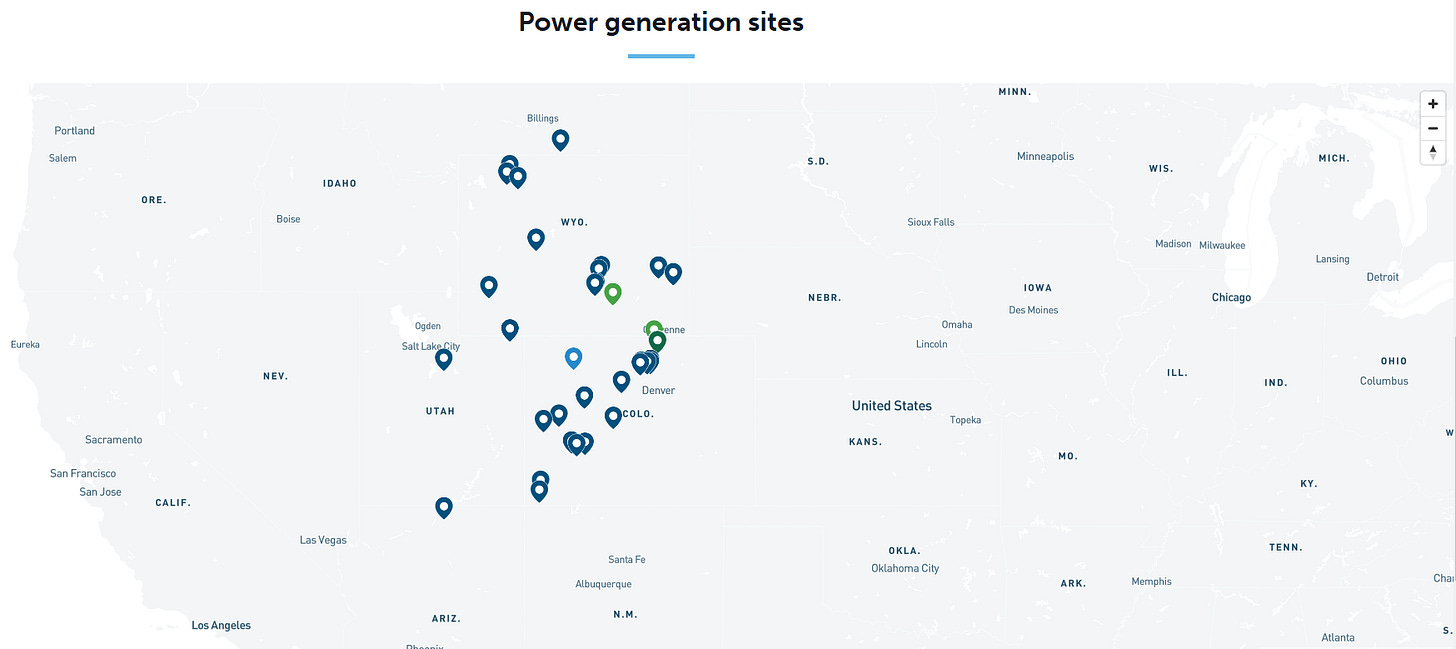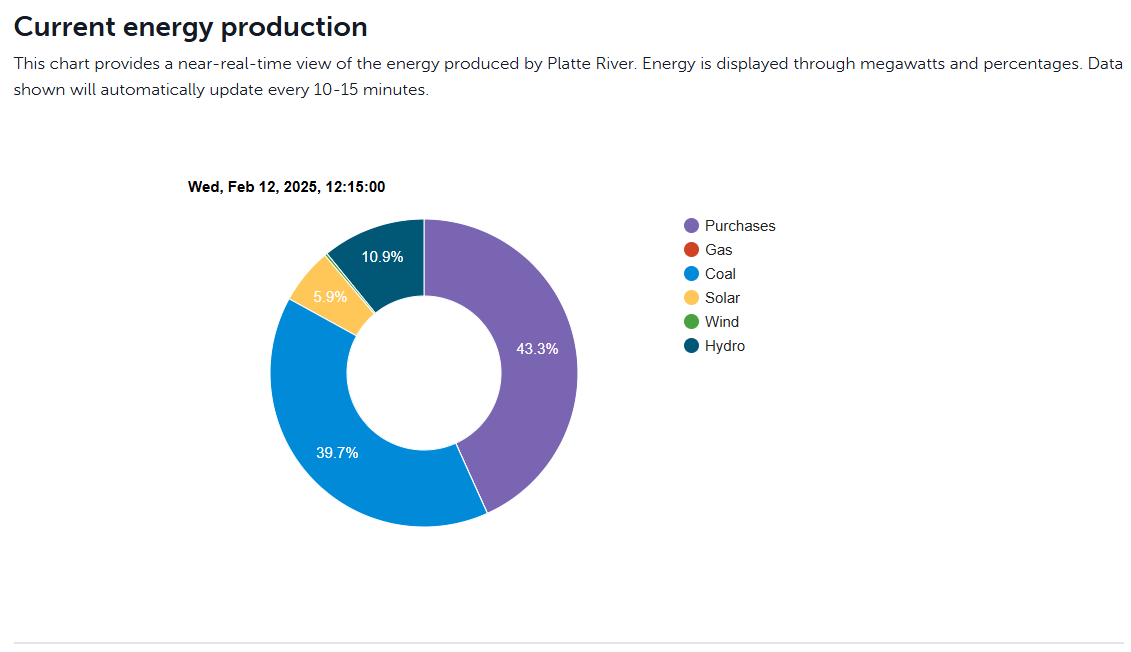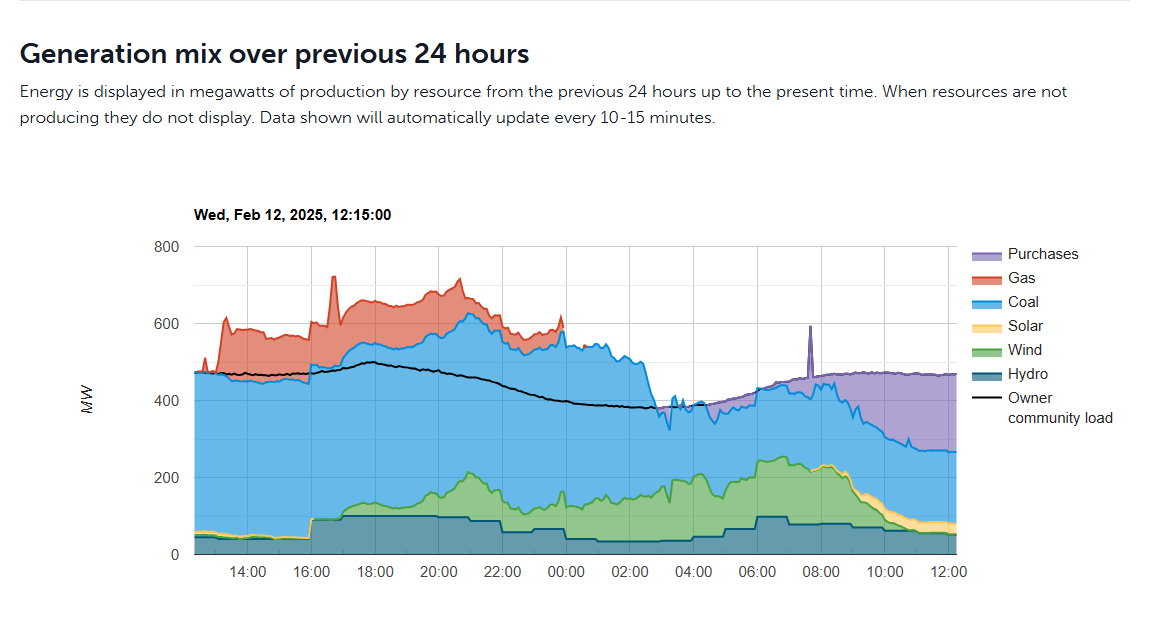You Can't Have it Both Ways, Northern Colorado Alliance for a Livable Future
Platte River Power Authority's proposed new gas turbines were not only a part of the "Plan" but are required with any renewable fantasy.
It turns out “non-profit” Northern Colorado Alliance for a Livable Future, Colorado Coalition for a Livable Climate, or whatever they’re called don’t just have their hands in tomorrow’s statewide nuclear bill.
(Photo credit:
)They’re also mobilizing their green shock troops tonight to protest against the proposal to build new gas turbines at the Rawhide Power Station in Northern Colorado, owned an operated by Platte River Power Authority (which is nowhere near either the North or South Platte rivers, but that’s a distraction).
A further red flag is that they’re asking people to sign up to testify using this Google Form, however Larimer County, the entity chairing the meeting, does not use Google Forms as their sign-up mechanism for public comments.
Larimer County uses Zoom instead.
Platte River Power Authority supply wholesale electrical generation to several Northern Colorado communities just as many other utilities across the state and country have made impractical and overly expensive promises to move their electrical generation to “carbon-free” sources.
PRPA’s Noble Hero’s Journey to “carbon-free” electricity sources by 2030 will lead to continued wholesale rates, which to no surprise will get passed down to rate payers who are mainly residents of the cities of Fort Collins, Loveland, Longmont, and Estes Park.
According to a recent Coloradoan article, these rates are estimated to increase 6% per year with a total increase by 2034 of 60%.
Hilariously part of the plan, apparently not known to our non-profit foes is that it included this whole time integration of additional natural gas capacity.
Per the same Coloradoan article:
The plan approved by the board Thursday is what's known as an integrated resource plan, or IRP, which shows it has adequate resources to reliably meet demand with financial sustainability and environmental responsibility in mind.
PRPA has a stated goal of working toward attaining 100% carbon-free energy sources by 2030, but use of new and existing gas facilities would bring the percentage below 90%, according to the plan.
For anyone familiar with
‘s work, particularly the Fatal Trifecta, this is a feature, not a bug of the rollout of renewable energy projects.The Fatal Trifecta
Glass-ceiling breaker, chemist, Pro-Nuclear hero, anti-Malthusian/anti-Eugenic/anti-Racist, and energy author Meredith Angwin, is the author of the excellent book, Shorting the Grid: The Hidden Fragi…
The Fatal Trifecta for the electrical grid requires:
An overreliance on weather-dependent, low power density renewables.
Backing up said renewables with just-in-time natural gas.
Over dependence on energy imports from neighbors.
PRPA’s energy production figures show a mix of their coal, natural gas, and solar assets along with imported hydro (typically from federal projects elsewhere but also from neighboring states extending all the way to Montana) and purchased power. Those latter two are easily considered imports from neighbors.
It’s easy to see that solar and wind are not much more than noise in the entire picture but then again it’s winter, and the current cold front ravaging the region means low wind.
Similarly with California’s ISO and LADWP, the sources of imported power from neighbors is obscure.
Even one of PRPA’s COOs admits that:
Raj Singham Setti, COO of innovation and resource strategy integration, told her that PRPA found those utilities have power purchase agreements that don't disclose where all of their power is coming from.
"They are assuming that the power purchase is all green energy," he said. "Every utility, at least in Colorado ... there is a gas component in their portfolios."
The opposition, to no surprise is also covered in the article:
But several community groups still think the gas turbines are the wrong move. Of the 16 speakers during public comment, 10 were opposed to the plan.
A statement from Northern Colorado Partners for Clean Energy that was read at the meeting called for accelerating local renewables and clean energy storage.
"PRPA has not made a convincing case that a full 200 megawatts of additional (gas) capacity is needed in the next five years. The IRP looks out 20 years to see what might be needed. Expenditures need not and so should not be made based on such a long horizon, but rather on near-term needs.
"Firm capacity can be purchased rather than built," the statement said, "and this may make sense over the coming few years while the consequences of technology, policy and market participation become more clear."
It went on to say: "Alternatives to gas will likely be more cost competitive well within the lifetime of the gas plant, leaving an unsustainable financial situation of owning an asset we don't use."
Northern Colorado Partners for Clean Energy turns out to be another name or affiliate for Colorado Coalition for a Livable Climate/Northern Colorado Alliance for a Livable Future









Your fatal trifecta ignores one, very obvious factor - an overabundance of stupidity! Have these people never heard of Germany? Have they never heard of France? Have they never heard of China?
You might suggest to these bozos that they STUDY Tim Maloney & Mike Conley's book, "Earth is a Nuclear Planet," for some eye-opening facts about nuclear power. Seriously, sir/ma'am, it is a very good book, and should be recommended reading for high school and above!
Unfortunately, I live in a region where the utility would consider building nuclear only "over their dead bodies." I have come to believe they don't know how to read.
Thank you for this! The Green Freaks have had sway on making an outsized impact on influencing energy policy and this helps to expose them. Keep up the great work!